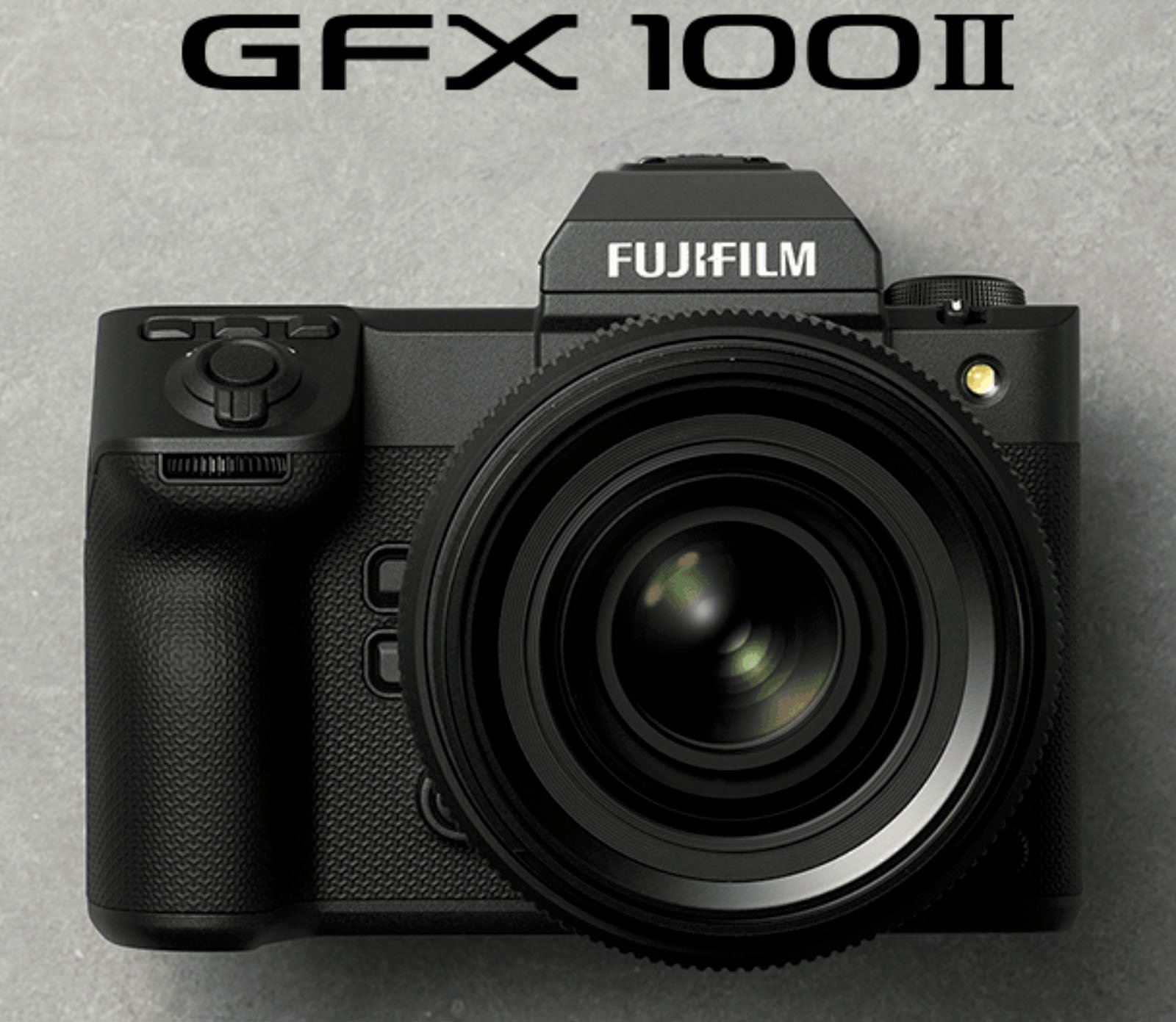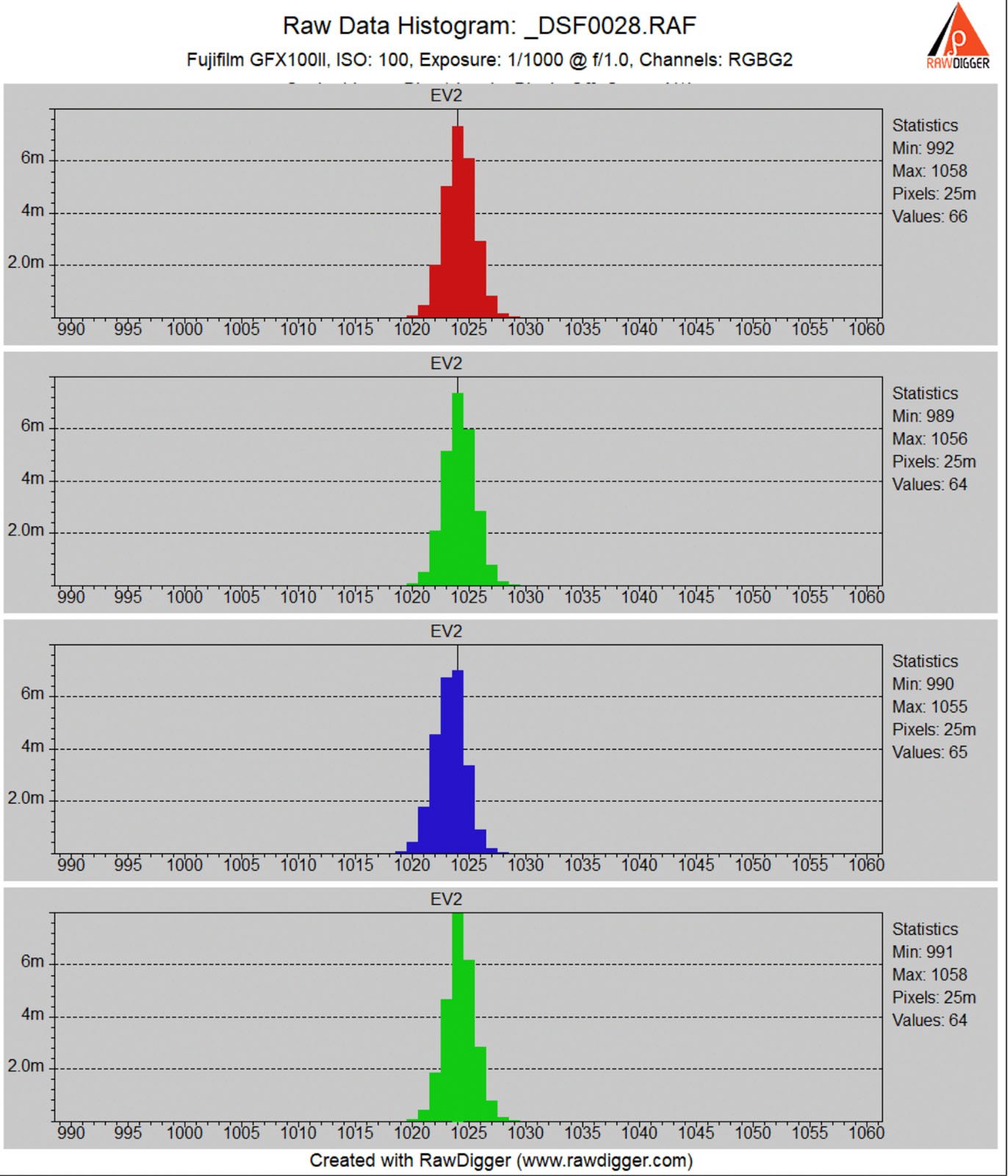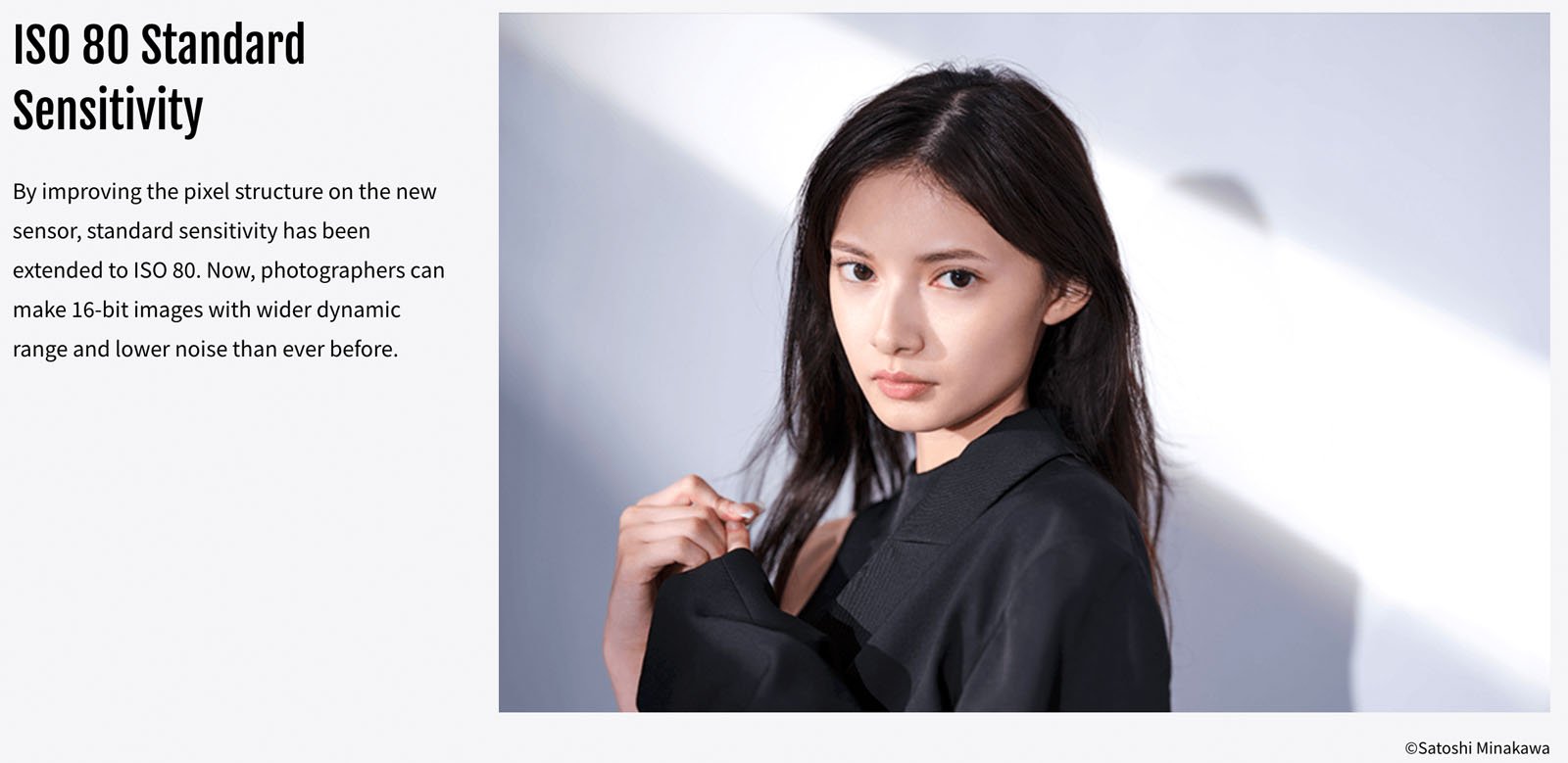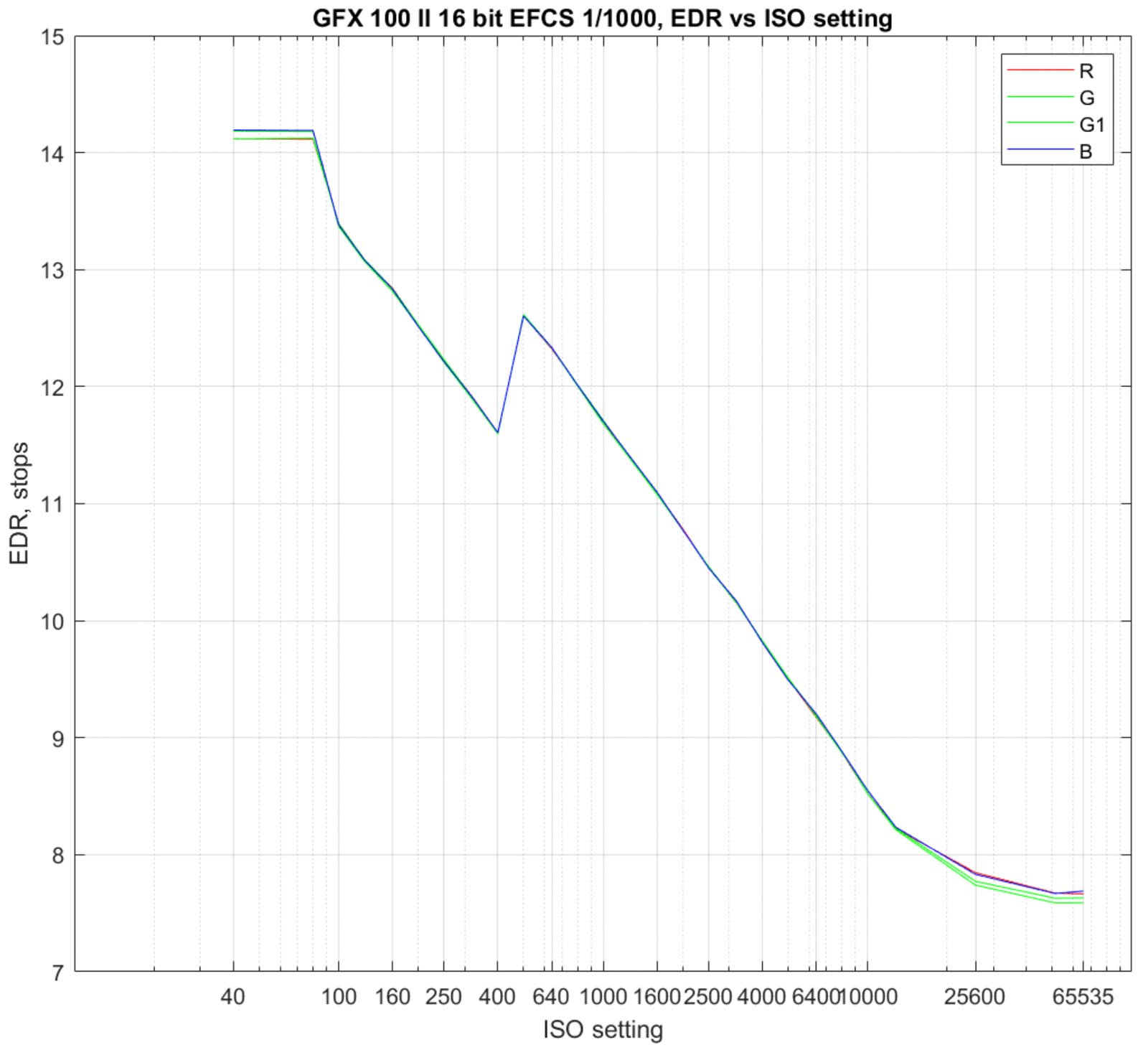![]()
Last month, Fujifilm held one of its X Summit events, using the occasion to launch the Fujifilm GFX100 II. The new flagship medium-format camera has attracted significant attention, and with good reason. However, the camera is enigmatic regarding high-speed shooting performance and dynamic range.
Setting the Stage: What Makes the GFX100 II Special?
Thanks to its speed, the GFX100 II is almost in a class of its own in the mirrorless medium-format camera space. The camera sports a new design and includes a revised 102-megapixel image sensor that offers twice the readout speed of the GFX100 and GFX100S sensor, per Fujifilm.

The “newly developed” 102-megapixel CMOS II HS image sensor is paired with Fujifilm’s latest fifth-generation X-Processor 5 image processing engine, promising a lower native ISO (80 versus 100), swifter autofocus performance and faster continuous shooting (eight frames per second versus five frames per second).
The GFX100 II promises better image quality, autofocus, and continuous shooting performance than its predecessors, which were already the fastest medium-format cameras at the time. Whether or not GFX owners were clamoring for more speed, that is what they have received.
However, this speed comes at a (hidden) cost.
102 Megapixels at 8 FPS… With a Catch
When Fujifilm launched its first 100-plus megapixel camera in 2019, the groundbreaking GFX100, it turned heads thanks not only to its resolving power, but its dynamic range, autofocus performance, shooting speeds, and RAW image quality. Specifically, the GFX100 did something that neither the original GFX50S nor GFX50R could do — shoot RAW images in 16-bit quality. The GFX50S and 50R were capped at 14-bit RAW image capture.
However, the 16-bit RAW quality was only available in single-shot drive mode, as Fujifilm acknowledges and plainly states in its marketing material and user manual. So, when shooting in CL or CH drive mode, RAW quality dipped from 16-bit to 14-bit. In most situations, this does not matter. Single-shot drive mode is the way to go for users who want to get the absolute most from the GFX100(S)’s large, impressive sensor.

Despite improvements to sensor readout speed and processing power, the GFX100 II has this same limitation concerning RAW image quality when shooting continuously.
Well, actually, that isn’t entirely true.
Based on independent testing, it appears that the GFX100 II goes one step further and drops RAW image capture to 12-bit quality, undercutting the vital advantage of a medium-format camera itself.
12-Bit on the GFX100 II
While PetaPixel has yet to get its hands on the Fujifilm GFX100 II, digital image technology and GFX system expert Jim Kasson has, and he has performed a wide range of tests with the new camera, uncovering some fascinating details.
One of these details is that the GFX100 II’s analog-to-digital converter (ADC) runs in a 12-bit precision mode when in CH mode. The camera then utilizes “in-camera post-processing” to “partially fill in the unpopulated buckets.”
PetaPixel spoke with Kasson about his findings, asking how confident he is in his findings and conclusions. In a follow-up post in response, Kasson said, “pretty darned sure.” He has published the “smoking gun:” RAW histograms.

“This is a dark-field shot with the shutter mode set to CH. It presents as 14-bit data, but if you look at the histogram you can see three empty ‘buckets’ for every full one. This means the data is 12-bit data,” writes Kasson.
The difference is evident compared to the GFX100 II’s RAW histograms in its single-shot drive mode. The GFX100 II’s RAW output files may indicate 14-bit quality, but the camera’s ADC is not operating at 14-bit precision when shooting in CH drive mode.

PetaPixel contacted Fujifilm concerning the camera’s bit depth in CH drive mode. The company replied, “Unfortunately, we are unable to share any details related to this topic.”
When asked to comment specifically about whether the GFX100 II uses 12-bit image data in CH mode, Fujifilm says that this is “proprietary information” and that the company is “unable to share additional details around this topic.”
Does 12-Bit Matter?
At this point, PetaPixel trusts Kasson’s testing process and results and can conclude that the GFX100 II’s ADC operates in a 12-bit precision mode when in CH mode. This includes when using the electronic shutter, whereby CH mode is capped at five frames per second, and when shooting with the mechanical shutter, which enables class-leading high-speed shooting at eight FPS.
Whether the final output file is 14-bit matters little, as the camera performs integral image capture work at 12-bit precision, but does this matter? Are there any situations when this has a noticeable effect on image quality?
PetaPixel asked Kasson about this, and he pointed toward a relatively old blog post he wrote about the Nikon D810 shooting RAW images in 12-bit mode. The post from February 2015 explains that the 12-bit versus 14-bit debate regarding image quality depends on the read noise produced by the image sensor. This is as true now with the GFX100 II as in 2015 with the Nikon D810.
Once ISO reaches a certain threshold — ISO 400 on the D810 — there is sufficient read noise that there is no measurable difference between 12-bit and 14-bit RAW files. Further, Kasson “bet you’d never see them in an actual photograph” anyway.
In the case of the GFX100 II, Kasson says that any situation requiring CH mode is likely to demand a higher-than-base ISO setting. While there are exceptions to that expectation, it is likely true in most scenarios.
In a separate 2015 blog post about the D810’s 12-bit RAW file option, Kasson asks, “Contemporary Nikons normally write 14-bit losslessly compressed raw files, but the camera has a mode that changes the bit depth to 12 bits, presumably with no increase in read noise save the quantizing component. Will the affect shadow detail?” He later concludes that Nikon’s 12-bit RAW image setting is “pretty gentle on the image quality.”
However, at the GFX100 II’s new lower base ISO setting of 80, much like the D810 at its base ISO of 64, photographers can achieve “peace of mind” by avoiding 12-bit RAW image capture. In the case of the GFX100 II, that means not using it in CH mode when shooting at low ISO settings, at least not when image quality demands are extreme, as they often are when someone elects to use a medium-format camera in the first place.
Speaking to PetaPixel over Zoom, Kasson said that the GFX100 II, in particular, could potentially show a loss in shadow detail in limited scenarios when shooting at ISO 80 in CH mode. However, Kasson says that he will be doing further testing on this topic.
Over email, Kasson explained that he doubts there are any concerns for “normal photography,” although he qualifies that this is in part because he expects CH mode to be used at high ISO settings.

At this point, the situation is less that the GFX100 II’s ADC operates at 12-bit precision in the camera’s highly touted CH mode and much more that Fujifilm is being secretive, at best, about it. At worst, Fujifilm is obfuscating reality.
The real-world impact of 12-bit RAW image capture is likely limited. However, it could matter precisely when the user expects the absolute best image quality that the GFX100 II has to offer — when shooting at base ISO. For that reason alone, it warrants disclosure. Nonetheless, Fujifilm has opted for silence.
The Value of Eight Frames Per Second
If Fujifilm is unwilling to disclose precisely how the camera operates when shooting in CH mode, whether it’s at five FPS with the electronic shutter or eight FPS with mechanical, it begs the question: Who was even asking for a medium-format camera that shoots at eight frames per second?
Even though the GFX100 II should deliver the fastest autofocus of any medium-format camera, if the GFX100(S) models were any indication, that doesn’t mean that professionals seeking to photograph action think to reach for a GFX camera. It is arguably not the right tool for that job. It is especially not the right tool if there is any noticeable impact on image quality, given that image quality is the primary selling point of a camera like the GFX100 II.

Pleasant Surprises, Too
Fujifilm is not only secretive about something that may reflect poorly on the GFX100 II, but the company was also unwilling to dive into too many details about something else interesting about the GFX100 II: inexplicably good dynamic range at ISO 80.

In Kasson’s very first GFX100 II blog post, he determined that at ISO 80, the GFX100 II’s engineering dynamic range (EDR) results are “a lot better than one would expect.” There is a kink in the GFX100 II’s dynamic range chart, and it is puzzling.
In that initial post, Kasson couldn’t explain the camera’s impressive dynamic range performance at ISO 80.

A follow-up post confirmed that the camera’s extended ISO 40 option does not offer any dynamic range advantages and that the camera’s excellence at ISO 80 did not depend on 14-bit versus 16-bit RAW image capture.
“The GFX100 II excels at ISO 80, with an increase over ISO 100 that I’m having a hard time understanding,” Kasson says.
In a subsequent post, “Fujifilm GFX 100 II — a theory of the ISO 80 implementation,” Kasson admitted of one of his theories that it failed to explain the odd kink in the EDR curves.
At this point, no explanation for what is happening with the GFX100 II at ISO 80 passes muster. Kasson says that this is one of only two times a camera has stumped him in this way; getting something past Kasson is remarkably difficult.

As for Fujifilm’s explanation, there isn’t much of one.
“ISO 80 is the native base ISO of the camera. It isn’t an extended ISO. This is probably what is contributing to the noticeable performance increase. The extended 30% capacity of the sensor’s photodiode also contributes to better performance,” Fujifilm says.
That would be a wonderful explanation if the EDR curve didn’t kink. But it does.
New Versus ‘New’
This conundrum may relate to one of the camera industry’s favorite words: “new.” Everything is always new, even when there is nothing obvious about it that is new. This happens frequently with image sensors, which are described as “new,” or “newly developed” in the case of the GFX100 II.
PetaPixel isn’t implying that Fujifilm is being misleading about what counts as new, by the way, because there are absolutely things about the GFX100 II’s sensor that are new, it is just not clear if any of these changes could explain the EDR at ISO 80.

“Sensors can be new even if they have the same resolution. With the new sensor in GFX100 II, there is a high-speed A/D converter that facilitates extremely fast read/out signals from the sensor…the sensor’s photodiodes have an extended capacity of 30%, which is due to a new manufacturing process,” Fujifilm tells PetaPixel.
Although the company opted not to answer a similar question about the company’s approach to tuning the GFX100 II’s image sensor — sensor tuning is one of the primary differentiators between the GFX system and Hasselblad’s mirrorless medium-format cameras, given that the cameras use the same image sensors but deliver different image quality results.
So, while the GFX100 II does not sport an all-new chip and appears to utilize the same Sony Semiconductor IMX461 chip as the GFX100 and GFX100S cameras, there are new pieces in the overall imaging pipeline. Aside from the fact that Fujifilm says that a new manufacturing process is involved, which is a fascinating detail, the sensor has a faster ADC, higher-capacity photodiodes, and Fujifilm has previously disclosed that the sensor’s microlenses are better, ensuring improved image quality at the edge of the frame.

By the way, for what it is worth, per Sony Semiconductor, the IMX461 sensor has built-in 11-bit and 12-bit ADC modes, alongside 14-bit and 16-bit ADC modes. The data sheet on the sensor explains that the sensor cannot shoot full-resolution images beyond six frames per second without dipping down to 12-bit precision.

This opens another puzzle. If the IMX461 can shoot at six frames per second when using its 14-bit A/D conversion mode, why does the GFX100 II in CH mode with the electronic shutter enabled use 12-bit precision mode? The camera is capped at five FPS with ES enabled, so it should be able to use 14-bit ADC precision. Although this is merely speculation, image processing demands of using the electronic shutter could be at play.
Kasson says no when asked if any of these changes could explain what he sees on the GFX100 II’s EDR.
For now, the best we can do is say that the GFX100 II delivers better dynamic range at ISO 80 than it should, and there is no explanation for why that is yet. However, whether there ever is an answer, photographers can still benefit by shooting at ISO 80 when the situation allows.
Camera makers rarely pass up an opportunity to toot their own horns, so, oddly, Fujifilm did not make a big deal about the camera’s remarkable EDR at ISO 80.
Wrapping Up: Where to Next for the GFX?
It would be fascinating to find out precisely how many GFX100(S) owners found that the camera’s speed was lacking and that the GFX100 II enables them to achieve something they require. It would be interesting, in general, to learn how many GFX owners use the camera outside single-shot drive mode, period.
Making autofocus faster is one thing, but why does a medium-format camera need to shoot quickly? It runs counter to the sorts of photographic applications for which medium format is optimal — landscape photography, working in a studio, and doing portraiture.
Nonetheless, Kasson mentioned that he would prefer if Fujifilm dedicated its engineering efforts toward improving image quality at low ISO settings rather than dedicated R&D resources to improving continuous shooting speed. As someone who has been invested in the GFX system since the day the GFX50S hit store shelves, I agree. As an early adopter, it also gives me pause that Fujifilm is playing vital cards — like bit depth — so close to the vest. It is fine to play coy with the engineering work that enables a camera to achieve its results, but photographers may raise an eyebrow when a company hides basic characteristics that can impact image quality.
